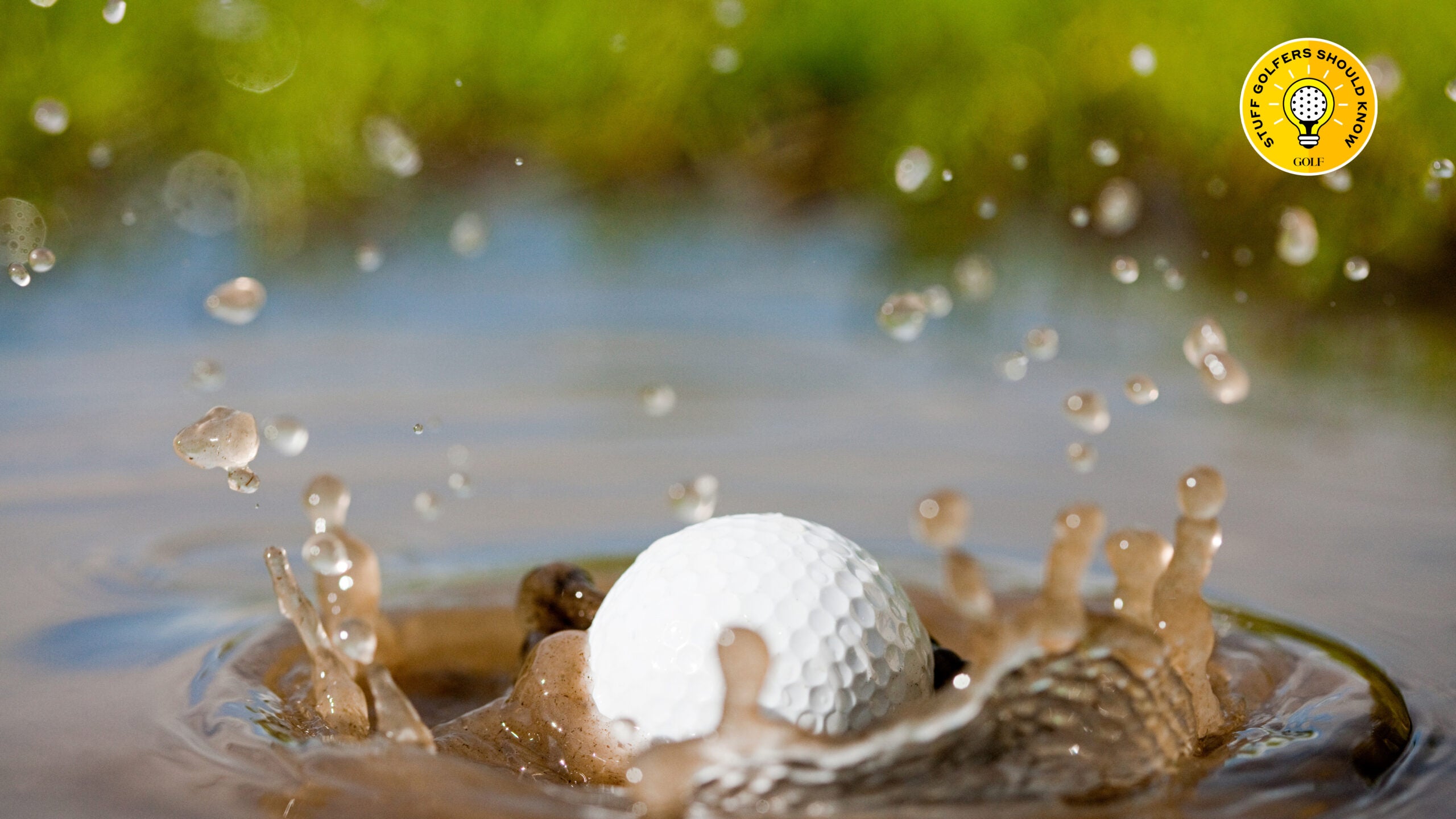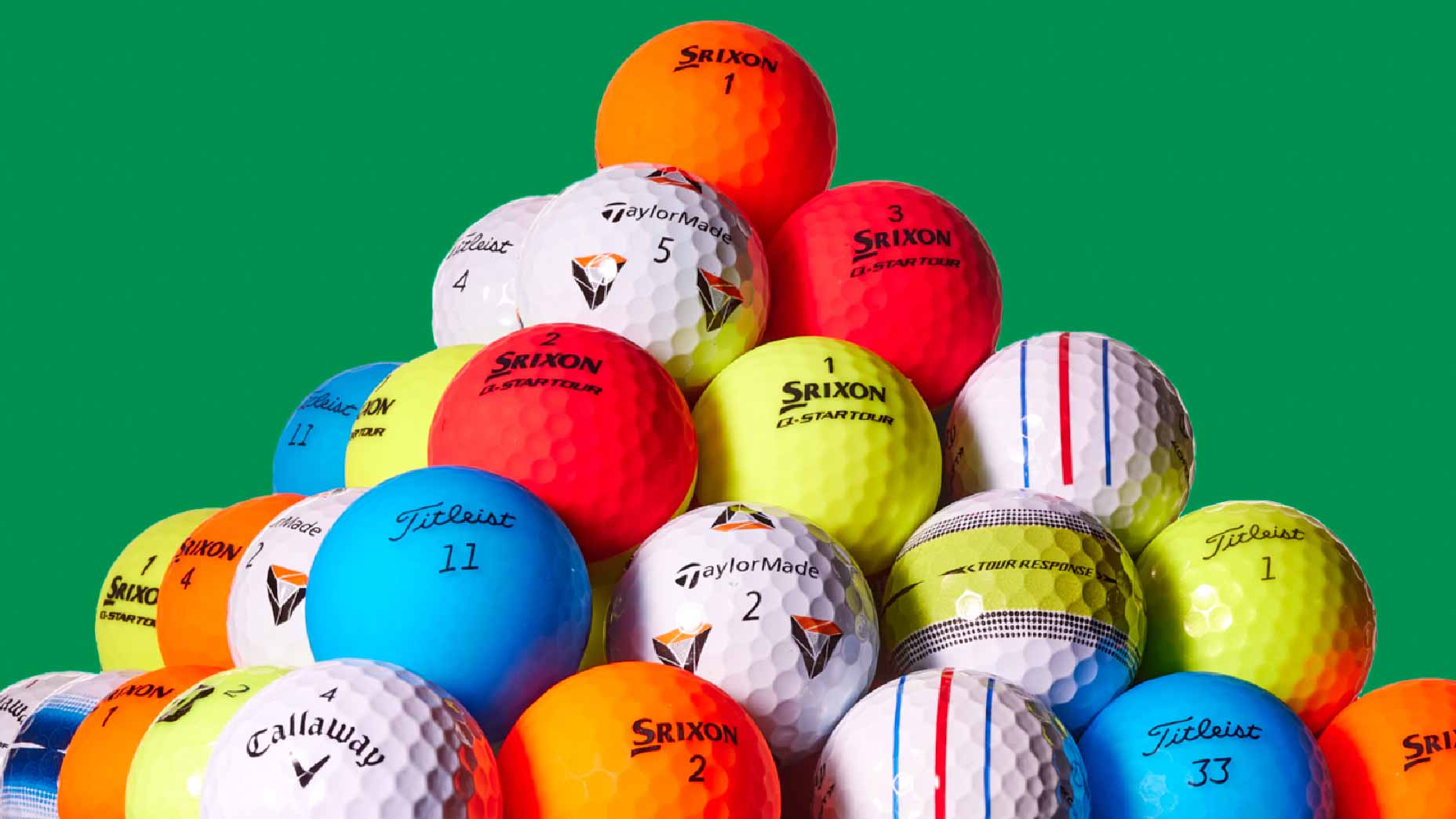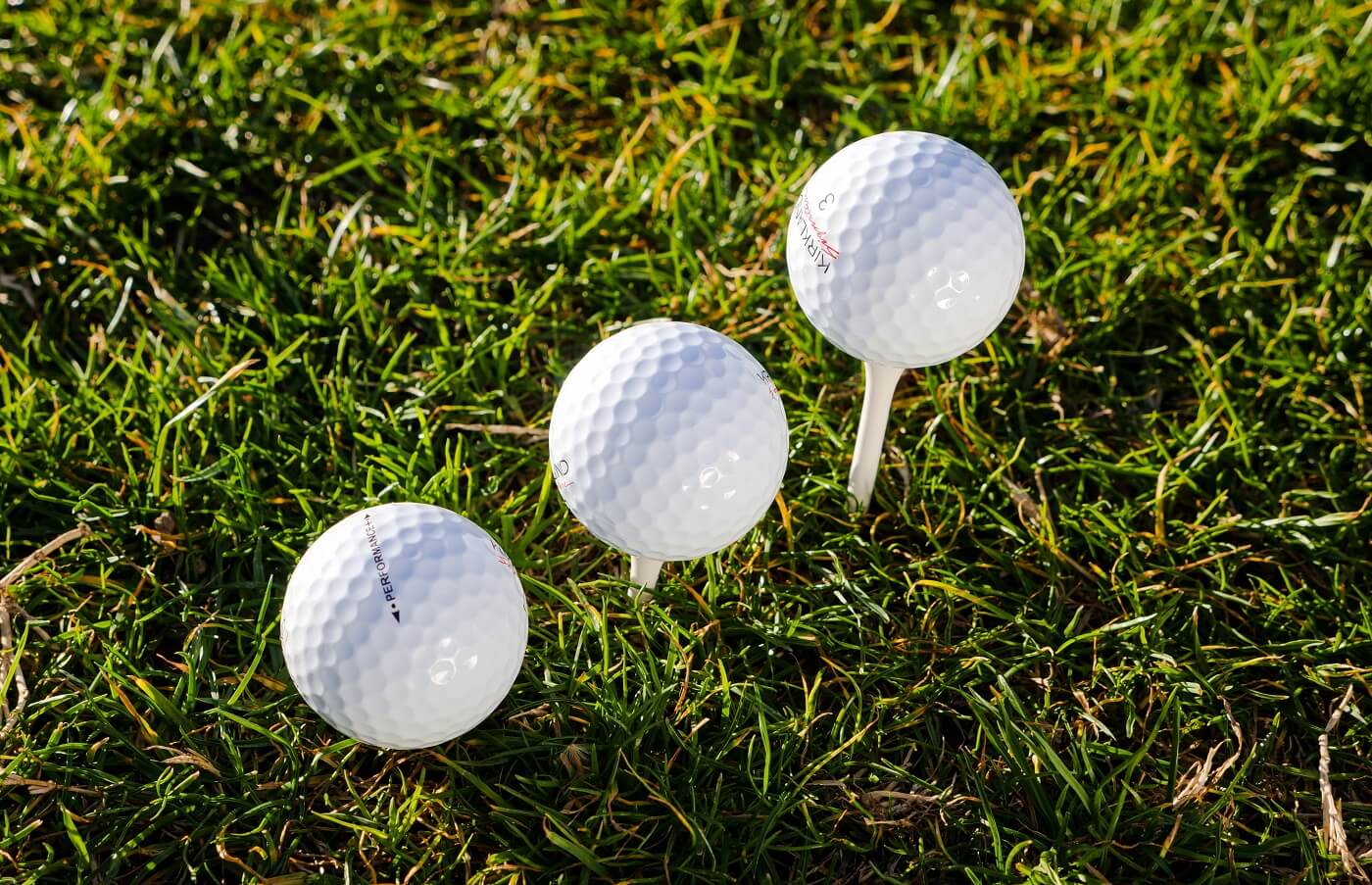
Studies have come to different conclusions on the effects of water on golf-ball performance.
Getty Images
Knock your golf ball in the water, and it’s bad for your score. But is it bad for the ball itself?
Put another way: If you fish a golf ball from the drink, how well can you expect it to perform?
The answer depends on several variables, including who you ask.
You probably won’t be shocked to hear that the major ball manufacturers take a jaundiced view of reclaimed golf balls. That’s particularly true of balls that have been sitting in water.
“All golf ball materials will absorb moisture at different rates and anything submerged in water represents the most extreme condition,” a Titleist representative told GOLF.com in an email. “If you didn’t see it go in and don’t know how long it was in the water, there is a high probability that the ball will not perform as designed.”
But how long is too long before performance suffers?
That’s difficult to determine, the spokesperson said, “because of changing variables — weather conditions, air temperature, water temperature, mud, ice, etc. — in addition to the fact that different golf balls with the variety of covers and layers will absorb moisture at a different rate. So one ball may perform better than another if it were submerged for the same amount of time.”
In short, not all balls are created equal.
Nor are all in the same condition when they go ker-plunk. Some are in mint condition when they get wet (raise your hand if you’ve never sliced a spanking-new ball into the water). Others are scuffed, maybe even cracked. And a ball with a compromised cover is more likely to let water in, which hurts performance. Studies have confirmed this.
Studies also have found that some balls start absorbing water almost the instant they’re submerged. But the most prominent of those investigations were conducted years ago. A more recent study, published last year in the International Journal of Golf Science, found that premium balls that had been pond-submerged for a year performed pretty much the same as premium balls that had been stored in optimal condition. (It’s worth noting, though: that study was funded partly by a golf-ball diver company; financial interests around the water-performance question cut both ways.)
One thing we know for certain is that golf-ball designs are forever evolving. And some experts believe that modern technology has been a game-changer, making high-performance balls as water-resistant as harbor seals. Well, maybe not that resilient, but capable of withstanding more time underwater than you might think without ill effect.
In an email exchange with GOLF.com, John Spitzer, the USGA’s managing director of equipment standards, said that the governing body had not carried out extensive research on the effects of water-submersion on golf-ball performance. But, he noted, “virtually all modern golf balls have a waterproof/resistant coat.” If that coat “has not been damaged,” he said, “there should not be any significant loss in performance for some time.”
How long is “some time?”
“One to two years,” Spitzer said.
How can you tell if the ball you just pulled out of the water has been submerged for more than one to two years? You might not be able to.
Maybe your safest best is not to hit in the water.
Or, better yet, stick to courses with no H20.










